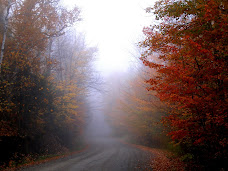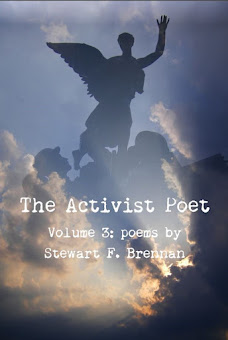Source: Global Research TV
In this Fairewinds’ feature, Fairewinds Associates Chief Engineer Arnie Gundersen analyzes a US government national laboratory simulation video that shows nuclear spent fuel rods do catch fire when exposed to air.
This simulation video proves Fairewinds’ assertions that nuclear fuel rods can catch fire when exposed to air, and Arnie discusses the ramifications of this phenomena if the Fukushima Daiichi Unit 4 spent fuel pool were to lose cooling water.
The Sandia National Laboratories video in its entirety can be seen here.
Transcript:
Arnie Gundersen: Hi, I'm Arnie Gundersen from Fairewinds and today I would like to talk to you about fuel pool fires: are they possible, what causes them and what are the consequences. Related to that is why is everybody focused on Fukushima-Daiichi Unit 4. Before I get into the details, I need to go back and touch on a couple of basics. Inside a nuclear reactor, uranium splits and when it splits, it gives off 95% of the heat. That is what makes nuclear fission so neat is that one atom can give off an incredible amount of heat. The problem is that 5% of the heat remains in these pieces called fission products. That heat gradually decays away over 5 years, but for at least 5 years, these pieces, these fission products, have to be cooled. That part of the reaction does not occur in the nuclear reactor, it occurs in the spent fuel pool. Remember now, that the uranium is in a pellet, about the size of my pinkie, and these pellets are put into about 12 foot long rods. The rods are made of a material called zircaloy and that is the problem. Zircaloy can burn in air if it gets hot enough. And it is called pyrophoric, so when it starts to burn, water cannot put out the combustion.
Now these pellets and rods are put into bundles. The bundles are about that big and 12 feet high. And those bundles are then lifted out of the nuclear reactor and put into the spent fuel pool. Now we know zircaloy can burn. Back in April of 2011, Fairewinds put a video up where we showed a single zircaloy rod burning in air. And on that video, you can actually see the piece of zircaloy bouncing across the table top. And it was combusting on it's own, there was no flame, and it was basically burning in air with no internal source of heat.
The question is, can that happen in a nuclear fuel pool? And what is it about Fukushima-Daiichi Unit 4 that has everyone concerned? There are 4 reactors in jeopardy at Fukushima-Daiichi. But everyone's attention now has been focused on the fuel pool at Fukushima-Daiichi Unit 4. Why is that? Well, in the Mark I design, there is no containment over the fuel pool. And that means that if there is a problem in the fuel pool, there is nothing to trap the radiation and prevent it from going airborne. At Fukushima-Daiichi, Unit 4 though, an entire nuclear fuel core had just recently been removed from the containment, from the nuclear reactor, and was put into the spent fuel pool. That is what makes Daiichi Unit 4 unique. It has got an entire nuclear core, out of the reactor, out of the containment, and in the fuel pool. Related to that though, is the fact that Fukushima-Daiichi 4 is also damaged. There is a bulge in the bottom of it and I believe it is something called a first mode Euler strut bulge. And it clearly is an indication of a seismic damage. This is not something that happened from the explosion. The building has been damaged from a seismic event. So Daiichi Unit 4 has an entire nuclear core out of the containment in a spent fuel pool and the building it is housed in, has been previously damaged by the explosions in the building and by the seismic events that occurred since March 11th of 2011. That is why all eyes in the world are focussed on what is going on in Fukushima Daiichi Unit 4.
The Nuclear Regulatory Commission wanted to know if a fuel bundle can burn in air too. And they commissioned Sandia National Labs to run a test. Just by coincidence, the test was done about 2 weeks before the Fukushima-Daiichi accident. Now this was a test of a nuclear fuel bundle, but I need to be clear: there was no spent nuclear fuel in the bundle. The heat from the pellets was simulated using electric resistance heaters, pretty similar to what you have got inside your toaster. So, this was a test to create the same amount of heat that the fuel pellets would create, but it was done with electricity, not with spent nuclear fuel. Other than that though, the fuel bundle was identical to the bundle that is in a nuclear fuel pool.
Now, this is a 5 hour video that we've condensed down to about 1 minute. The screenshots that we've taken for this show, in the upper left, a picture of a fuel bundle with wires going into it - that's the electricity - that's designed to heat the fuel and wires coming out - those are monitoring wires. And, on the far right, is top to bottom looking at the fuel bundle from the side. There's an enormous amount of data collected in these 5 hours and all of it is on the Sandia site which we linked to/from the Fairewinds site. The first video shows a bundle immediately before the heat was applied. Shortly after, it's the same bundle, the heat is on, and it's already beginning to smoke. A little further on is the bundle, again, smoking considerably. Well, where's there smoke there is fire. The last one in the sequence shows the bundle on fire. Now, what you're seeing is zircaloy burning in air. There was no match applied to start this fire, it just got hot enough so that it began to combust of its own volition - in air.
Just to be clear one last time, that was a simulated test we just watched using electricity in place of spent nuclear fuel. But it is clear that a single nuclear fuel bundle can burn in air. Now Fukushima-Daiichi Unit 4 would be even worse. Inside Daiichi's fuel pool, are 1500 fuel bundles, not one, 1500 fuel bundles, 300 of which are just removed from the nuclear core. So instead of one very hot bundle, we have got 300 very hot bundles.
Now it is even worse than that. The Japanese put all of their nuclear fuel from this latest core offload in a very confined space in the pool. In America, we do not do that. We call it checker-boarding. We will put hot nuclear fuel next to cold nuclear fuel in a checkerboard pattern so that there is a gap between them. But the Japanese did not do that. This entire nuclear core is side by side by side with other physically hot bundles.
So, is a fuel pool fire possible at Fukushima-Daiichi? We have got the video evidence to show it is. What can make it happen is the real question.
In early July, the fuel pool cooling system failed at Fukushima-Daiichi. Both the primary pump and the back-up pump failed and for a period of several days, there was no water circulating in the fuel pool. During those days, the pool began to heat up and it heated up at about 18 degrees Fahrenheit or 10 degrees Centigrade every day. This is a huge pool, it is 300,000 gallons of water. And to think about 300,000 gallons of water heating up at 18 degrees a day gives you a feel for the amount of heat that is in that pool. So after about a week, the pool would begin to boil, and after about another week, the pool would begin to boil to the point where the top of the nuclear fuel was exposed. And an event like we saw on the Sandia Labs video would indeed become possible.
So the Japanese have about 2 weeks in the event of the fuel pool cooling system fails to fix it. I do not think that that will be a problem. I think they could fix almost every cooling problem in two weeks.
The real problem is if there is an earthquake. The building is already structurally damaged and if the pool were to drain from an earthquake, then all bets are off. There is no way to cool the pool and we know that the heat source is astronomical. The fuel in the pool would catch fire, and the uranium that is then encased in the zircaloy, would go airborne.
Brookhaven National Labs did a study back in 1998 about this and they estimate that over 180,000 cancers would result from a fuel pool fire and that an area of about 40 mile radius would have to be permanently evacuated. Now the Brookhaven study had less uranium in it than the Fukushima fuel pool. So the odds are that if a fuel pool fire were to occur at Fukushima-Daiichi Unit 4, it would, in fact, be worse than the Brookhaven study.
Regardless of what the nuclear industry claims, a fuel pool fire is possible if the water were to drain from a seismic event. Now this is not just a Fukushima-Daiichi Unit 4 problem. There are 23 Mark I reactors in the United States and they have even more nuclear fuel in them than Unit 4 at Fukushima-Daiichi. This is an international problem, especially in the United States, because we have the most of these Mark I reactors. What can we do about it? We can put the pressure on Tokyo Electric and on the Japanese Government to get the fuel out of that pool just as quickly as possible. We cannot wait for an earthquake to be proven right or wrong. In the United States, we can demand that the Nuclear Regulatory Commission take the fuel out of these fuel pools in the 23 nuclear reactors that are identical to Fukushima-Daiichi. Right now, industry pressure to save money is preventing those fuel pools from being emptied.
Fairewinds Energy Education has tried to bring forward several really important worldwide technical issues since the accident at Fukushima-Daiichi. One of them is the condition of spent fuel pools in the Mark I design.
This August, again, we are asking for your help to continue with our energy education efforts. Maggie and I take nothing from Fairewinds Energy Education. But it does cost money to produce these videos and to do the research and development that support the videos. We are very grateful for the donations we have received so far, and we would appreciate your considering a donation now in August again, so we can continue into the future.
Thank you very much. I will keep you informed.

















a.jpg)

a.jpg)








No comments:
Post a Comment
Thanks for commenting on this post. Please consider sharing it on Facebook or Twitter for a wider discussion.